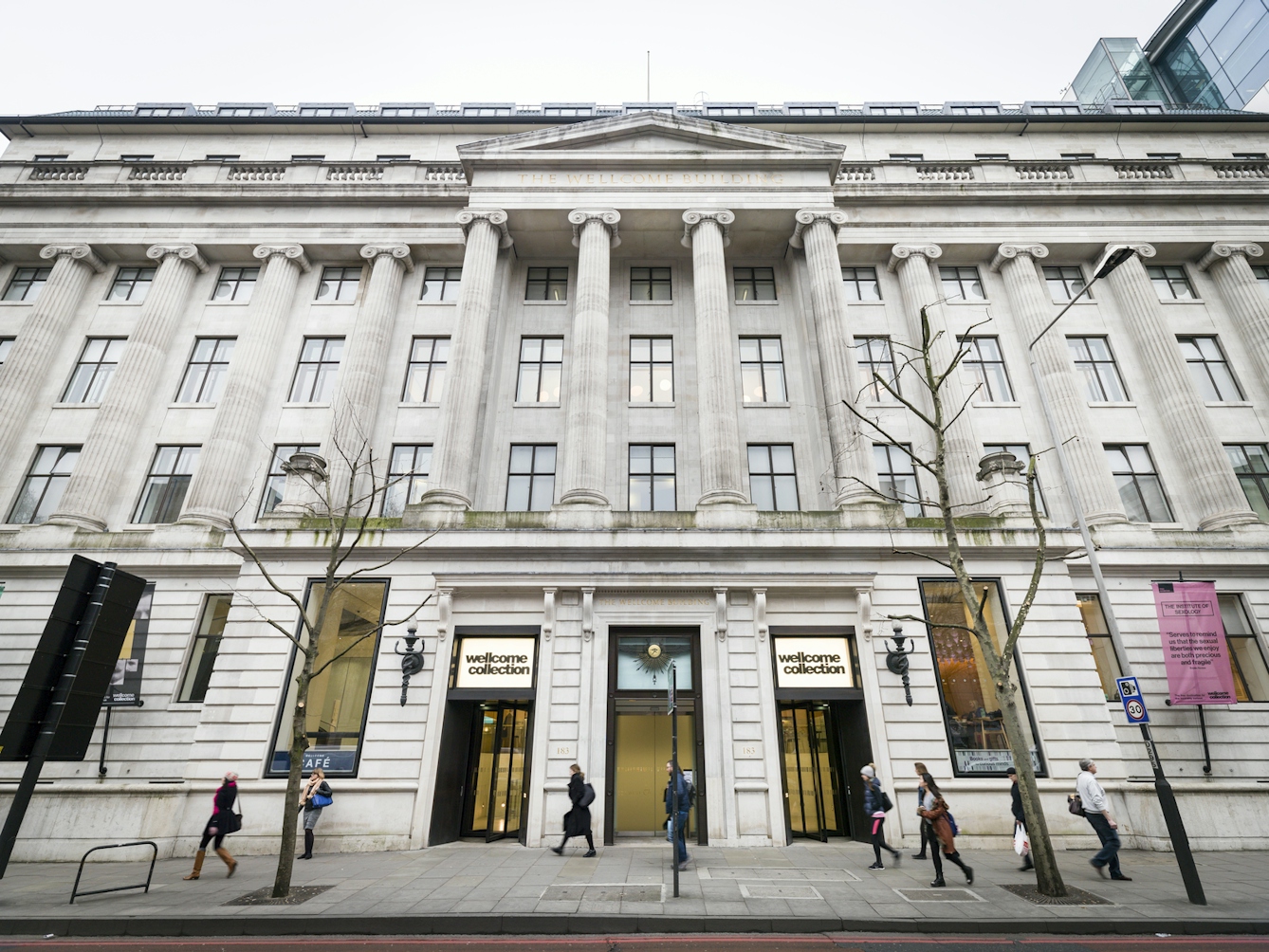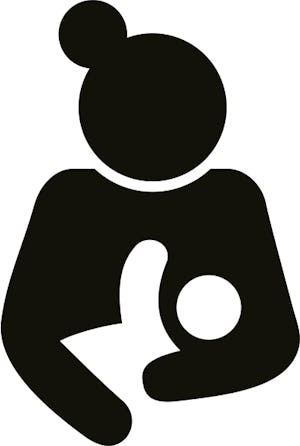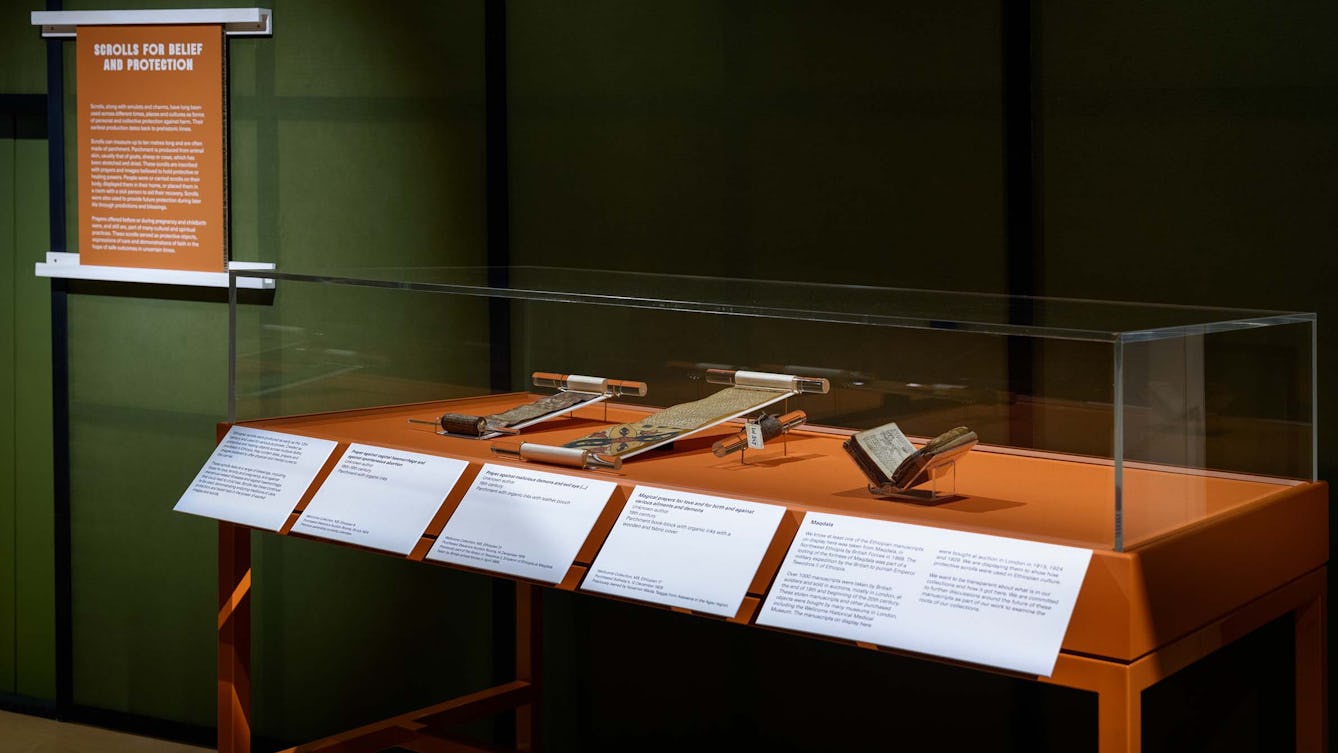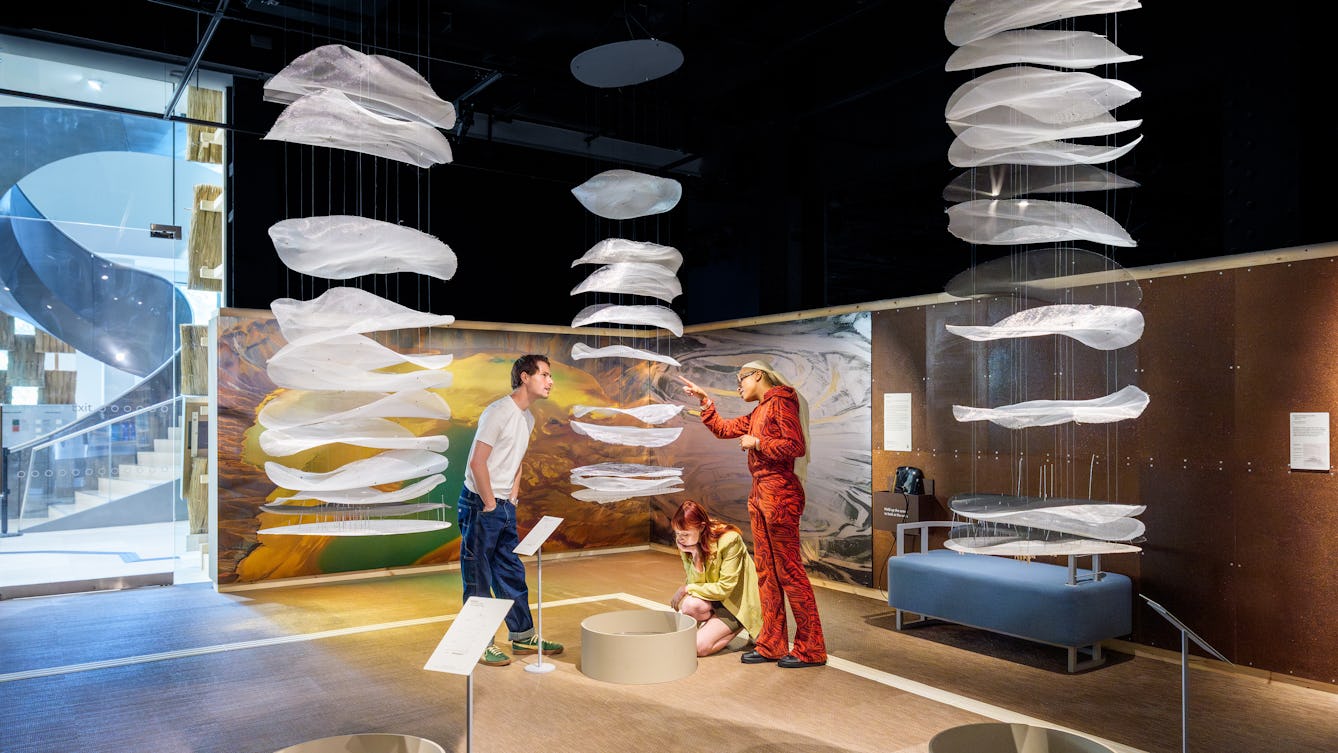Information to help you plan and prepare for your visit to the exhibition.
Introduction to 'Expecting: Birth, Belief and Protection'

This exhibition is called ‘Expecting: Birth, Belief and Protection’. An exhibition is a collection of things to look at and learn about.

The exhibition is at Wellcome Collection.

The exhibition is in Gallery 3.
Gallery 3 is on level 1 of our building.
Introduction to Wellcome Collection
For more information about:
- opening times
- accessibility
- travel
click on this link: Visiting Wellcome Collection visual story.
What the exhibition is about

‘Expecting: Birth, Belief and Protection’ is a small exhibition about childbirth, belief and protection.
Childbirth is when someone gives birth to a baby.
Belief is when a person has a strong idea about something that we cannot see or measure.
This could be:
- belief in a god
- a different, important belief about life
When someone has a belief we also say they believe in something.
Protection is keeping safe from harm or danger.

This exhibition was made because of a special birth scroll in our collection. The scroll was made in England around 1500CE / 600 years ago.
A birth scroll is a long piece of parchment with pictures and prayers written on it.
Parchment is a type of paper made from animal skin.
A prayer is when you ask your god(s) for help.
People used birth scrolls to protect themselves and their child during pregnancy and childbirth. This is because childbirth can be dangerous and painful.
Pregnancy is when a baby grows inside a person before being born.
Pregnancy is also called being pregnant.

This exhibition also has:
- Books and artworks from the past
- Artworks from now about childbirth, pregnancy and fertility. Fertility means being able to get pregnant.
Pregnancy and childbirth were dangerous in the past. It can still be very dangerous today.
The books and artworks show how people:
- in different times
- in different places
- with different beliefs
think and feel about childbirth and protection.
What is in the exhibition

There are different things to look at and listen to in the exhibition. These include:
- Manuscripts and scrolls. Manuscripts are old books and papers with handwritten words and pictures. Scrolls are rolled up documents.

- artworks

- books

- a film

There is seating throughout the exhibition. You can sit on any of the seats.

There is a copy of the birth scroll on a large screen in the exhibition.
You can make the birth scroll bigger or smaller on the screen.
There are white dots on the screen you can press to find out more information about the scroll.

You can listen to this information using the headphones.

There is an activity area where you can write or draw.
Sensory information

You can speak or chat in this space.

This is a sensory map for the exhibition.
It shows information about sound, light, video screens and seating areas in the exhibition.
What is in room 1

Room 1 has 3 objects about childbirth.

'The birth of a baby'
This is a painting from Italy. It was made about 500 years ago.
It shows the birth of a child in a wealthy family. Birth means being born.
There are many people in the picture to help the baby.

The birth of mankynde: otherwyse named the womans booke (...)
This is a medieval book from about 500 years ago. It is written by Eucharius Rösslin.
The book tells us how people from 500 years ago thought about pregnancy and childbirth.
There is a picture of a birthing chair. These chairs were used to make childbirth easier.

Untitled by Seyni Awa Camara
This sculpture is made of clay. Seyni Awa Camara’s work is about life and motherhood.
There are two sculptures by Seyni Awa Camara in the exhibition.
What is in room 2

In room 2 there are artworks from now and from the past.
They tell stories about:
- how people used to try cure illnesses and other medical conditions hundreds of years ago
- scrolls used for belief and protection
- ways these old artworks link to life today.

This film is called ‘Inside the medieval birth scroll with Dr Sarah Fiddyment’
This film shows a protein scientist called Sarah Fiddyment.
Sarah studies proteins and what they do. Proteins are important tiny parts of the human body.
Sarah looked at the birthing scroll in this display. She found tiny pieces of food and plants on the scroll. This tells us that the scroll was used long ago during pregnancy and childbirth.
The film is about 5 minutes long.
You can listen to the sound of the film on headphones.
Medieval cures
The medieval period is a time far in the past. Period is another word for a length time. When we use the word medieval, we mean a period that started 1500 years ago, and ended 500 years ago. We mostly use the word medieval to talk about things from Europe.

In this section of the exhibition there is a medieval book with recipes for medicines.
These recipes used plant, animal and mineral ingredients to:
- treat illnesses
- heal wounds
- improve health.
Some of these recipes were also used to help with:
- getting pregnant
- being pregnant
- childbirth.
Scrolls for belief and protection
This section has 4 scrolls in it. A scroll is a long piece of parchment with pictures and writing on it. Parchment is paper made from animal skin.
These scrolls have images and prayers on them. They were made for protection and healing.

Some of these scrolls were made for protection and childbirth.

'Birth scroll with prayers and invocations to Saints Quiricus and Julitta'
This birth scroll is very special. It is 1 of very few similar scrolls we still have from medieval England.
The scroll has:
- religious Christian images
- texts in both Latin and English.
People believed that the scroll would protect them from harm or danger.
People would use the scroll for protection by:
- reading or reciting the texts
- looking at or touching the images
- carrying or wearing the scroll.
We think the scroll was used during childbirth. During childbirth the scroll could be wrapped around the body like a belt.

This scroll is very old and would break easily. It is in a special case to keep it safe.
You can press the button to switch on a light, then you can see the scroll better.

There are 3 scrolls from Ethiopia.
Ethiopia is a country in East Africa.
The scrolls have prayers for different things. These include:
- prayers for love
- prayers for fertility and pregnancy
- protection from illness or child loss.
Contemporary connections
People today still face many challenges with childbirth and pregnancy.
In the UK now, about 1 in 4 pregnancies end in miscarriage.
Miscarriage is when unexpected child loss happens in pregnancy. The pregnancy ends without a baby being born.
In the UK, Black people and people of colour are nearly 4 times more likely to die during pregnancy or childbirth than white people.
In this section there are contemporary artworks by two artists.
These artworks are about:
- being a mother
- child loss
- feeling strong in difficult times.

'Melanie and Melanie’s Gown' by Tabitha Moses
This print and dress with embroidery were created by artist Tabitha Moses. Embroidery is decorating fabric with threads.
She made them to think about her experience receiving in vitro fertilisation (IVF) treatments.
In vitro fertilisation (IVF) is a fertility treatment to help you get pregnant. It is often used by people who have difficulty getting pregnant.

Untitled by Seyni Awa Camara
Seyni Awa Camara is an artist from Senegal. Senegal is a country in West Africa.
She made this sculpture after having multiple miscarriages and medical difficulties.
The sculpture is made from clay. In it you can see:
- animals
- children
- parents.
These artworks show ideas about healing and protection.

Engagement and reflection
At this table you can write or draw if you want to. On the table there are:
- comment cards
- pencils
- a copy of the birth scroll.

The comment cards have instructions on them. You can write or draw your thoughts about:
- the exhibition
- new things you learned at the exhibition
- something else you are interested in.

You can take your card home or leave it here for others to read.
You can look at what other people have written or drawn.

There is also a copy of the medieval birth scroll that you can touch.
It is not made from parchment or animal skin. It is made from fabric, so it will not break if you touch it.

You can ask a member of staff for help.
Accessibility in the exhibition

Accessibility means making sure everyone can take part.
Outside the exhibition you will see this text panel. It has information about accessibility for this exhibition.

Here you can also pick up:
- A large print guide.

- A visual story.

- A sensory map. The sensory map shows you things like where there is loud sound, bright lights, or seating.
The film in this display has:
- captions on the screen
- written transcripts of the words from the clips.

If you need help with anything, you can ask a member of gallery staff.








